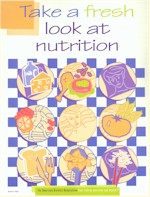

Tricky Snickers
Audience:
-
This activity is geared for third and fourth graders.
-
Learner characteristics- Our students are from a rural community.
They have access to television, print, and computer media. However,
most students will not have had much access to movie media because it is
a far distance to the nearest movie theater.
-
Comptencies- We expect our students to be able to stay on task during
the lesson, work in groups, and be creative.
Objectives:
Health Skills:
-
Third grade: 5.4 Choosing balanced meals away from home.
-
Fourth grade: 5.2 Selecting healthful snack foods.
Information Skills:
Goal 2: The learner will identify and apply strategies to access, evaluate,
use,
and communicate information for learning, decision-making, and
problem-solving.
Objective 2.1: - The learner will explore research processes that meet
information needs.
Focus:
Acknowledge that there are a variety of reasons for seeking
information curricular pursuits, personal interests, problem-solving and
decision making
Explore print, electronic, human, and community reference sources
Recognize that a systematic approach is more productive than a
random approach
Describe several research process models
Objective 2.2 - The learner will engage in a research process to meet
information needs.
Focus:
Develop a Search Strategy
define and analyze the task
determine format of the end product
identify known and unknown information
establish personal goals for the task
select the most appropriate model for the task
prepare a plan
Access Information
identify resources
gather information
credit sources
Critique Information
verify reliability of the sources
analyze and synthesize information
determine further needs, if any
revise/restructure the search
outline information to be used
Use Information
follow a prescribed procedure for developing products
create, produce and/or present a final product
credit sources of information
Evaluate the Process and the Product
assess the extent to which the process was appropriate
appraise the technical quality of the product
determine how well the product communicated information to
the audience
Activity/Lesson:
1.Watch video twice- 5 minutes add clip
2. Discussion Questions:
-
After viewing this advertisment did you want to eat a snickers bar?
-
plot: What is happening in the commercial? What is the message?
-
What background knowledge do you need in order to understand the joke in
this commercial?
-
What techniques are used in the commercial in order to get you to buy the
product?
-
Why would a person choose to eat a snickers bar when he/she has extra time?
-
Why do you think the snickers company created this commerical to sell their
product?
-
Have students explain the statement: "Not going anywhere for a while,
grab a snickers!"
3. Review healthy alternatives to candy bars
Healthy Snacks


4. Activity: The students will create a role play that includes a current
issue, just as Mike Tyson was a current issue in 1997, and a healthy snack
alternative. Newspapers will be provided for students to find current articles.
*Note: The teacher could videotape the role plays if time permits.
Materials: Televison, VCR, videotape, and newspapers
-
Media Analysis: Media Literacy Key Concepts
1. All media are constructions. Media products are carefully
crafted constructions, the results of
many decisions, conscious and unconscious.
-
The Snickers commercial makes the candy seem to be bigger and more fulfilling
than it really is. The commercial shows the snickers bar on an angle
with soft carmel oozing out of it. This makes the candy bar seem
very desirable.
2. The media are commercial entities. All media products are
shaped, in terms of both their
form and their content, by commercial considerations.
-
Snicker's uses an athlete to show a candy bar's ability to satisfy even
an athlete's hunger. The candy bar will also make an athlete successful.
3. Media communicate values and ideology. All media products
contain implicit and explicit
value messages and assumed truths about the nature of human beings
and the world in which we live.
-
This commercial is saying that our society idolizes athletes. It
also suggesting that we are wasting our time if we eat healthy foods.
Why not eat something easy and fast? Our society values food especially
foods that are satisfying. Snickers bars can make you feel better if you
do not want to do something.
4. The media have social and political implications. The mass
media have the potential to affect
our behavior as individuals and citizens in a variety of ways.
-
The commercial is saying that it is okay for people to eat high fattening
foods, even if one happens to be an athlete. The media is playing
on a social event that became political. The Mike Tyson fight made
news media everywhere. Therefore, the citizens are reached and effected
even more by the commercial if they were aware of "The Mike Tyson Fight."
5. Media forms are related to content. Different media represent
reality in different ways: the
form of a given piece of media shapes the message it sends.
-
Television reaches all it's watchers. The viewers who watched the
"Mike Tyson Fight" on television may also be large television watchers.
The advertisment reaches those who watch T.V. a lot because this
is where the commercial is located.
6. The media have aesthetic qualities. Familiarity with the
aesthetic dimensions of media can
lead to deeper understanding and greater enjoyments.
-
The snickers bar looks large and delicious in the commercial. The action
of the commercial is centered around the candy bar. It appears that
a snickers bar can solve hunger and boredom.
7. Audiences are involved in the process of creating meaning.
What a viewer makes of a
piece of media depends on his or her past experiences, viewing skill,
and current state of mind.
-
You may have a biased opinion of Snickers if you have eaten the candy bar
before. Further, if you don't know about the Tyson message you may
not quite understand the commercial's message.
Links:
![]()
![]()

